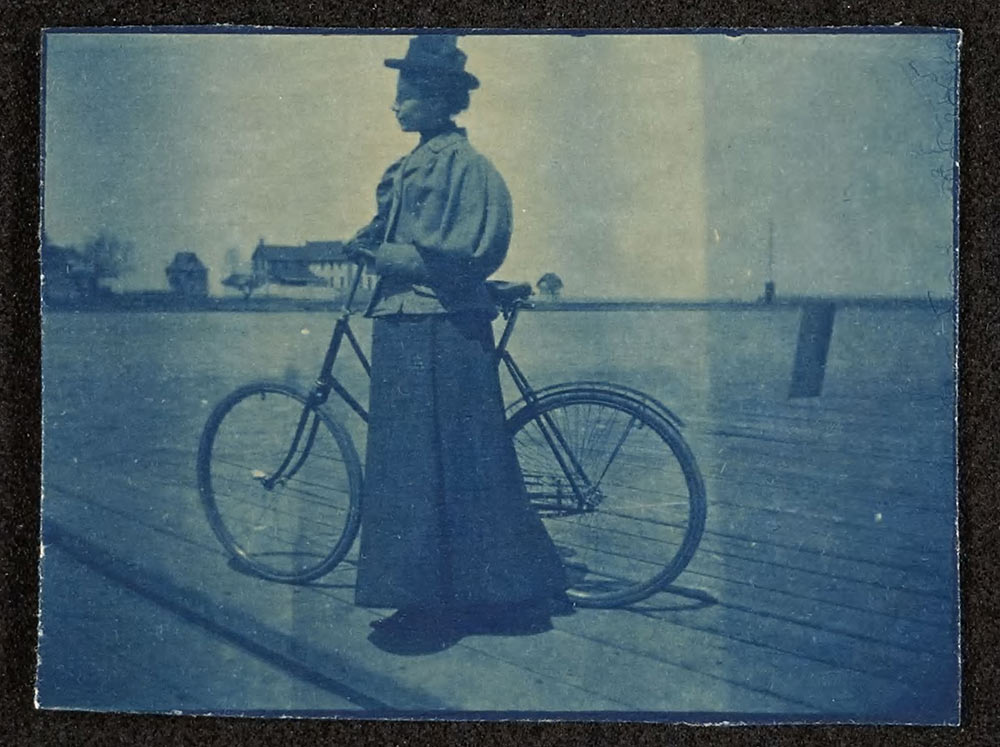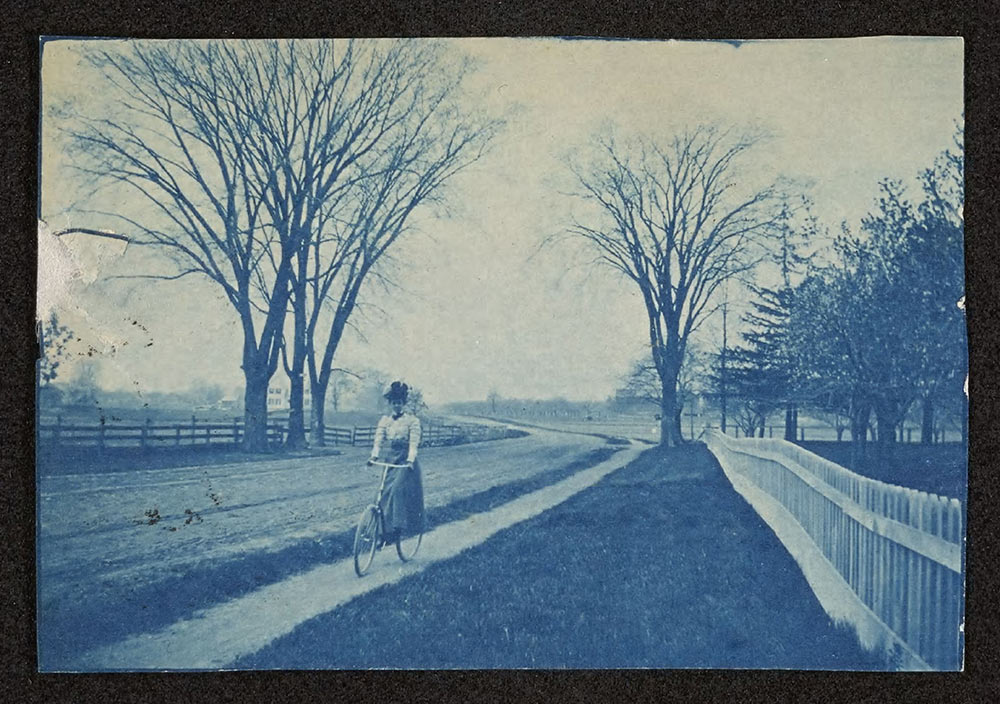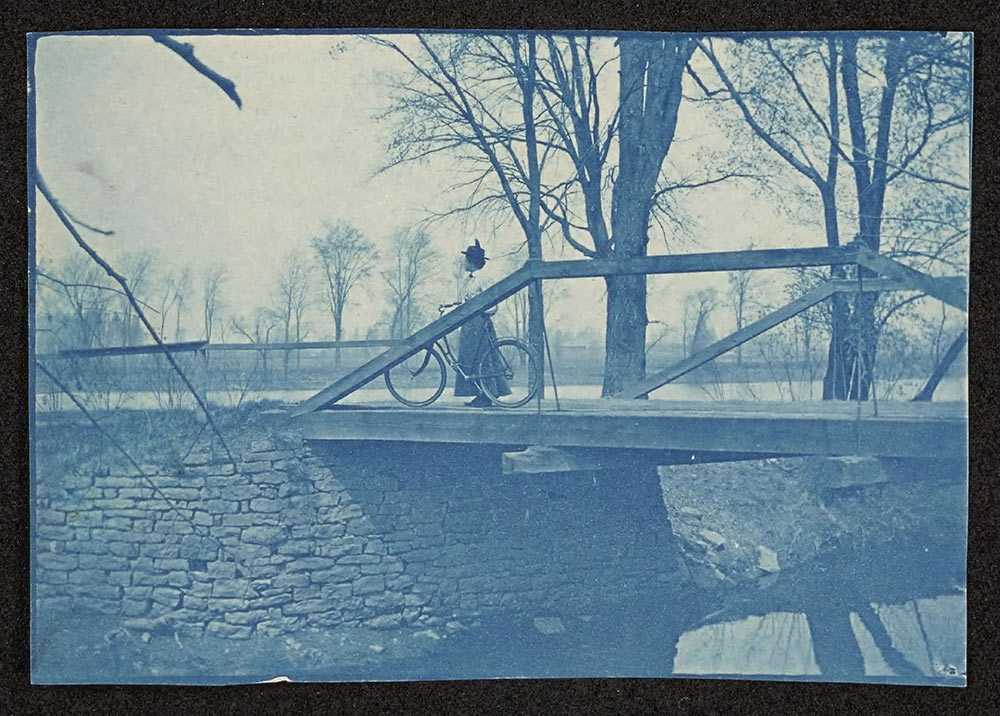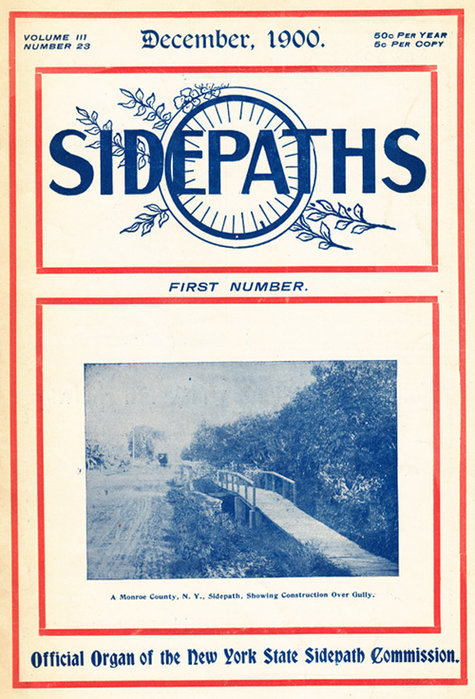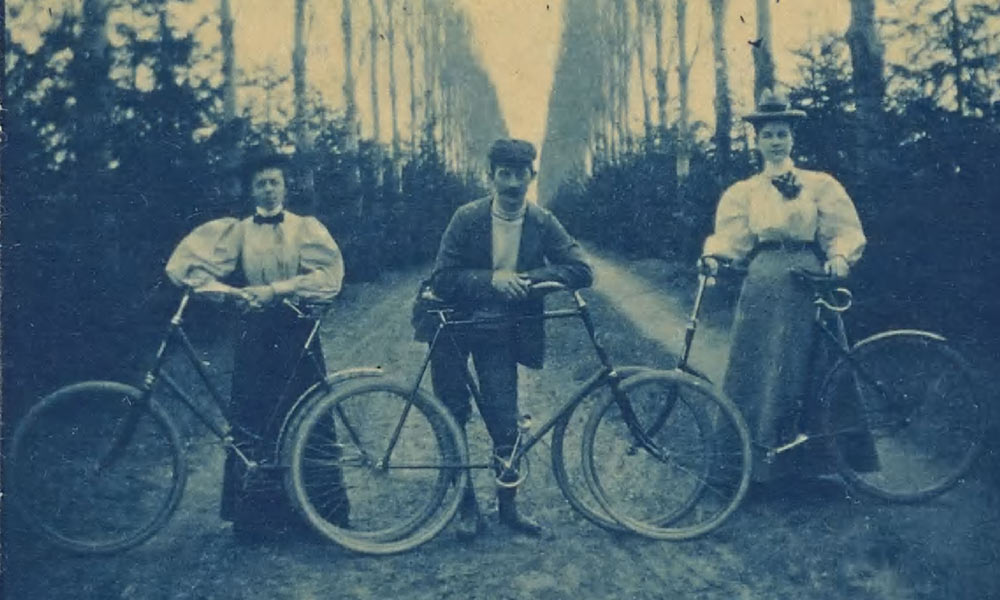Personal urban transportation didn’t start with Henry Ford’s Model T. It started with Columbia, Stearns, and other bicycle manufacturers a full two decades before the first Model T came off the assembly line. During the 1880s and 1890s, bicycles served as the preferred mode of personal transportation in major American cities such as Los Angeles, Chicago, Minneapolis, and Rochester.
Bike culture in Victorian Rochester has been beautifully captured in the May Bragdon Diaries Project, an online resource curated and hosted by River Campus Libraries that features full text transcriptions and facsimiles of 10 diaries by Bragdon.
Layered with original photographs, fabric swatches, correspondence, and other ephemera, the diaries, as the site notes, illustrate “the life of a single working woman set free by the bicycle and enlivened by friendships, the Kodak, the theatre, and a connection with the natural world.” Bragdon’s orbit included a constellation of family, coworkers, and friends, as well as obscure and well-known people.
An avid cyclist and amateur photographer, Bragdon (1865-1947) cycled up to 13 miles a day. Her diaries contain dozens of photos that document Rochester’s active biking community at the turn of the 20th century.
She and her friends pedaled their way around the city and to the surrounding suburbs thanks to Monroe County’s network of sidepaths intended specifically for cyclists. By 1900, the county boasted the most extensive network of bicycle sidepaths in the nation, which made cycling the easiest and most accessible form of personal transportation for Rochesterians.
Bragdon’s diaries serve as evidence of an alternative history of personal transportation, and her joy of the “wheel,” as she often referred to her bicycle, inspires a vision of urban biking which contemporary cyclists would certainly welcome.
The website is annotated and searchable. To help with bike-related searches, be sure to include the words “wheel” and “Diana,” which was the name Bragdon chose for many of her bicycles.
